Moirai (The Fates): Greek Incarnations Of Destiny And Personification Of A Single, Unavoidable Fate
Angela Sutherland - AncientPages.com - The first forms of religion appeared in prehistory because humans understood that there are many natural phenomena, such as floods, drought, thunder, and lightning, that no one could stop or control.
 Strudwick, A Golden Thread. (1885). Source
Strudwick, A Golden Thread. (1885). Source
It was believed that everything beyond human capabilities controlled it due to the existence of a "higher power." Thus, the first forms of "gods" emerged in the human mind.
People worshiped impersonal supernatural forces, deprived of personality and even names, or even dead objects believed to have magical power. At one point, deities were worshiped under the animal's figure, symbolizing different forces of nature.
Later, the deities were depicted as people with individual names, appearances, and attributes, including the power to dominate people and the world of nature.
The gods decided about the fate of people and revealed their will and ideas using signs, prophecies, oracles, and fortune-telling. However, above the all-powerful gods, there were Moirae (sometimes one or three of them).
They were the goddesses of fate, destiny, and irrevocable necessity. Ancient Romans identified them with the Parcae. In Norse mythology, the Norns were spinning fate goddesses; in Slavic beliefs, the Sudice were considered the spirits of fate and judgment.
The Moirai were in charge of the thread of life which ran through every mortal being, leading them from birth to death.
There was only one Moirai, according to Homer, who considered them as a singular powerful force. Still, the poet Hesiod, on the other hand, mentioned the Moirae were three daughters of Zeus and Themis, but in earlier tradition, they were daughters of Nyx (or Night).
 The three Moirai, or the Triumph of death, Flemish tapestry, c. 1520 (Victoria and Albert Museum, London) source
The three Moirai, or the Triumph of death, Flemish tapestry, c. 1520 (Victoria and Albert Museum, London) source
One was Klotho ("Spinner"), spinning the thread of life, Lachesis ("Guardian") was guarding it, and the third of them, Atropos ("Irreversible"), was responsible for cutting it.
Atropos is considered the most unremarkable and modest but also the most terrible. Her decisions are unchangeable; she cuts the thread of life; she decides the outcome of battles and the fate of the warriors; her choices are always irrevocable.
Moirai Personified Eternal Unchanging Order
Moirae are usually depicted as ugly and older women, often dressed in white robes. Each of them has its attributes associated with her.
Clotho (Klotho) is usually depicted with a spindle or a roll (the book of fate); Lachesis is pointing with a staff to the horoscope on the globe; and Atropos with a pair of scales, or a sun-dial, or a cutting instrument.
They determined the span of life of every mortal from birth to death. They represented the unavoidable fate with no exceptions. They personified the eternal, unchanging order of the world. Their decisions were indisputable, even by the actions of the gods, who were also subordinated to the Moirae - the personification of a single fate.
They were so powerful that even the gods feared them, as they had neither the rights nor the means to alter their decisions. It has never been possible to avoid the Moirai, who symbolize the universal law – fate.
It is said that even the great Zeus was subjected to the Moirai's power, as the Pythian priestess at Delphi once admitted. However, no classic writing explains to what extent the Fates's decisions impacted the lives of immortals.
"The question of whether or not fate or destiny is an overruling power to which the gods must bow has been earnestly discussed. Some critics believe that in the poems, fate is absolute and stands above the gods. One critic maintains that Zeus is at one time subject to Moira and that at another time, he takes her [their] place as he spins out to men their fortune. Others say that the will of Zeus and fate are the same. Still, others believe that fate and religion, in general, are used by Homer to suit his poetic needs…" (J. Duffy).
The ancient Greeks believed that man has a predetermined destiny and that the course of life events cannot be avoided. It was fate that determined the lives of the heroes and ordinary people. What has been done by the gods, foretold by the oracle, must meet a man, and he has no escape.
The Moirai were deeply respected as the guardians of the order that prevailed in the universe and earthly relations. They had their altars and temples. Human life depended on the Moirai; they were called at the child's birth, and the bride and groom offered them a sacrifice on the wedding day. Brides in Athens offered the Moirai locks of hair, and women swore by them. People knew their future and tried to change it thanks to prophecies but to no avail.
Written by – A. Sutherland - AncientPages.com Senior Staff Writer
Updated on Oct 17, 2023
Copyright © AncientPages.com All rights reserved. This material may not be published, broadcast, rewritten or redistributed in whole or part without the express written permission of AncientPages.com
Expand for referencesTanner R. Greek Mythology
Duffy J. The Classical Journal Homer's Conception of Fate
Evslin B. Heroes, Gods and Monsters of the Greek Myths
More From Ancient Pages
-
 Legendary Sea Monster Exists: Icelandic Government Commission Says
Featured Stories | Sep 27, 2014
Legendary Sea Monster Exists: Icelandic Government Commission Says
Featured Stories | Sep 27, 2014 -
 Ancient DNA Yields Surprising Findings On World’s Earliest Seafarers
Archaeology | Jun 30, 2022
Ancient DNA Yields Surprising Findings On World’s Earliest Seafarers
Archaeology | Jun 30, 2022 -
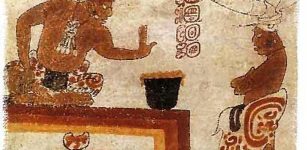 Ancient Maya Sacred Groves Of Cacao Trees – Located
Archaeology | Jan 31, 2022
Ancient Maya Sacred Groves Of Cacao Trees – Located
Archaeology | Jan 31, 2022 -
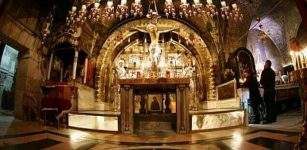 Jesus Christ’s Tomb Dates To Roman Emperor Constantine’s Era – Researchers Confirm
Archaeology | Dec 12, 2017
Jesus Christ’s Tomb Dates To Roman Emperor Constantine’s Era – Researchers Confirm
Archaeology | Dec 12, 2017 -
 Enigmatic Newport Tower – Built By The Vikings, Knights Templar, Freemasons Or Someone Else?
Featured Stories | Aug 1, 2024
Enigmatic Newport Tower – Built By The Vikings, Knights Templar, Freemasons Or Someone Else?
Featured Stories | Aug 1, 2024 -
 Stunning Reconstructions Shows What Colchester Looked Like During Roman Times
News | Jul 2, 2022
Stunning Reconstructions Shows What Colchester Looked Like During Roman Times
News | Jul 2, 2022 -
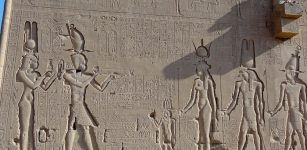 Why The Discovery Of Cleopatra’s Tomb Would Rewrite History
Featured Stories | Nov 16, 2022
Why The Discovery Of Cleopatra’s Tomb Would Rewrite History
Featured Stories | Nov 16, 2022 -
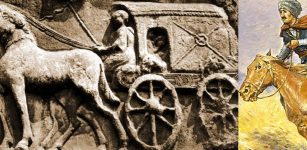 Struggle To Get Mail On Time Has Lasted More Than 5,000 Years – Part 1
Featured Stories | Jul 30, 2017
Struggle To Get Mail On Time Has Lasted More Than 5,000 Years – Part 1
Featured Stories | Jul 30, 2017 -
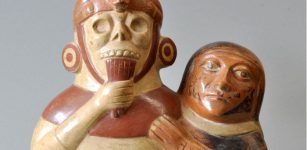 South American Musical Instruments Reflect Population Relationships – Archaeological Records Reveal
Archaeology | Sep 20, 2021
South American Musical Instruments Reflect Population Relationships – Archaeological Records Reveal
Archaeology | Sep 20, 2021 -
 Mysterious Ancient Ruins Of Engaruka – Why Was The Site Abandoned?
Featured Stories | Apr 18, 2017
Mysterious Ancient Ruins Of Engaruka – Why Was The Site Abandoned?
Featured Stories | Apr 18, 2017 -
 2,000-Year-Old Celtic Dice Discovered In Poland
Archaeology | Oct 11, 2023
2,000-Year-Old Celtic Dice Discovered In Poland
Archaeology | Oct 11, 2023 -
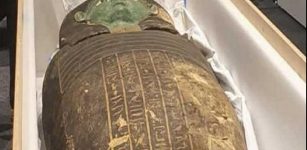 Egypt Recovers Ancient Wooden Coffin From Houston Museum In The US
Archaeology | Oct 4, 2022
Egypt Recovers Ancient Wooden Coffin From Houston Museum In The US
Archaeology | Oct 4, 2022 -
 Ancient Secrets Of Sacred Towers And Stone Circles In Colorado Where Spirits Of Native Americans Still Live
Civilizations | Mar 19, 2017
Ancient Secrets Of Sacred Towers And Stone Circles In Colorado Where Spirits Of Native Americans Still Live
Civilizations | Mar 19, 2017 -
 Ancient Cranial Modification In Peru Led To Social Inequality
Archaeology | Jan 24, 2018
Ancient Cranial Modification In Peru Led To Social Inequality
Archaeology | Jan 24, 2018 -
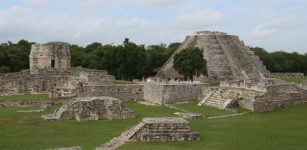 Collapse Of Ancient Mayan Capital Linked To Drought – New Study Suggests
Archaeology | Aug 20, 2022
Collapse Of Ancient Mayan Capital Linked To Drought – New Study Suggests
Archaeology | Aug 20, 2022 -
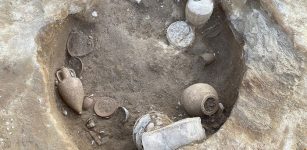 Rare Find Provides New Insight Into Etruscan Life Under Rome
Archaeology | Sep 3, 2022
Rare Find Provides New Insight Into Etruscan Life Under Rome
Archaeology | Sep 3, 2022 -
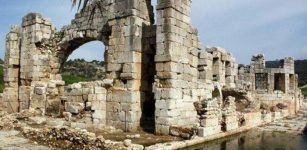 City Of Patara: Long History Of Wars And Visits Of Prominent Figures Of Ancient World
Archaeology | Jul 9, 2020
City Of Patara: Long History Of Wars And Visits Of Prominent Figures Of Ancient World
Archaeology | Jul 9, 2020 -
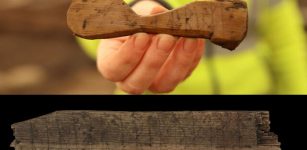 Rare Runic Inscriptions Engraved On Bone And Wood Discovered In Oslo, Norway
Archaeology | Feb 15, 2022
Rare Runic Inscriptions Engraved On Bone And Wood Discovered In Oslo, Norway
Archaeology | Feb 15, 2022 -
 Change Of Burial Tradition Among The People of Early Medieval Europe
Archaeology | Aug 6, 2021
Change Of Burial Tradition Among The People of Early Medieval Europe
Archaeology | Aug 6, 2021 -
 Bulla Felix: Legendary Italian Leader Of Outlaws Who Robbed The Rich And Gave To The Poor
Featured Stories | Mar 23, 2023
Bulla Felix: Legendary Italian Leader Of Outlaws Who Robbed The Rich And Gave To The Poor
Featured Stories | Mar 23, 2023
